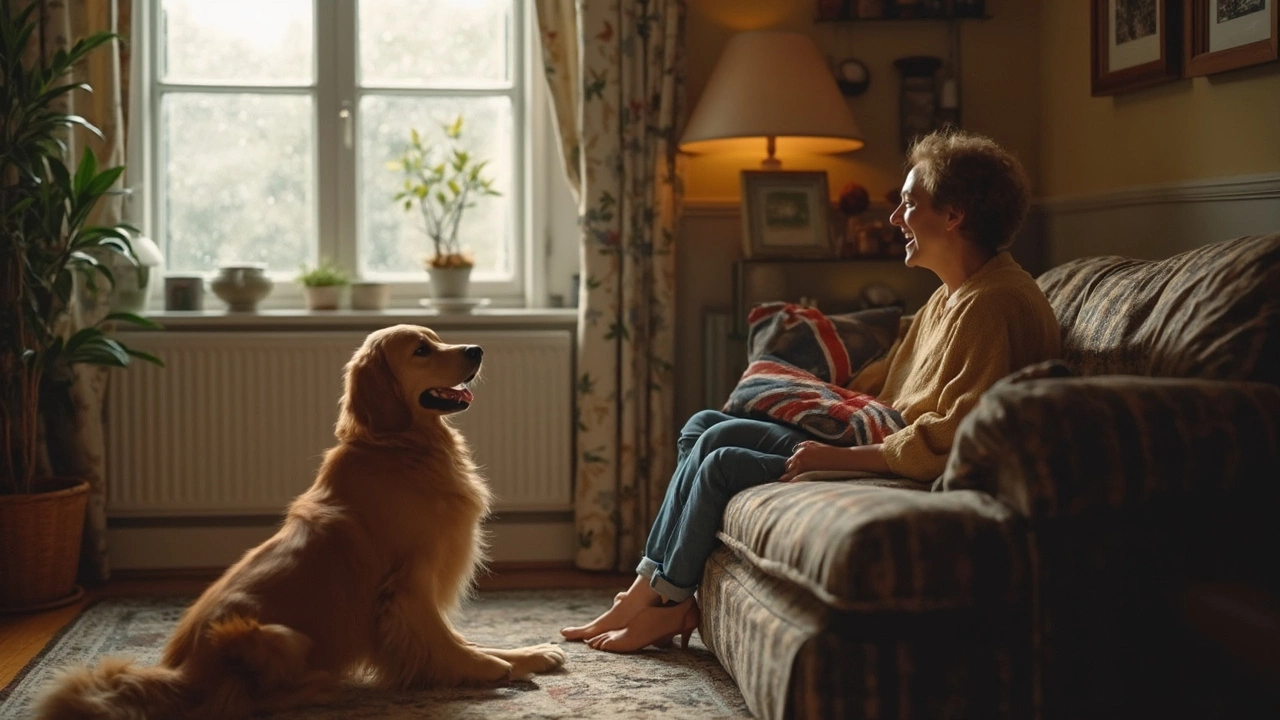What Your Dog’s Greeting Says About Them (and How to Make It Better)
Ever wonder why your dog jumps, licks, or spins in circles when you come home? Those actions are their version of a hello. Each move tells you something about their excitement level, confidence, and training. Understanding the signals helps you respond in a way that keeps both of you relaxed.
Typical Dog Greeting Behaviors
Most dogs greet with a mix of body language. A wagging tail usually means they’re happy, but the height of the tail matters – high and stiff can signal excitement or a touch of dominance, while low and slow often shows calm friendliness. Jumping up is a classic attention‑seeker; they’ve learned that a big splash of affection gets them what they want. Licking is another soft‑touch sign – a way to share scent and show affection.
Watch the ears and eyes too. Forward‑pointing ears and a relaxed face mean they’re engaged and comfortable. If the ears are pinned back and the eyes are wide, your dog might be nervous or overly stimulated. Spotting these cues early lets you calm the situation before it turns into a hyper frenzy.
Tips to Teach a Calm, Polite Greeting
1. Ignore the excitement at first. When you walk in, turn away and give no attention until your dog settles. This teaches them that calm behavior gets the love, not the jumps.
2. Ask for a sit. A simple "sit" before you pet them creates a clear rule: they must be seated to get affection. Reward the sit with gentle praise and a treat.
3. Use a consistent cue. Words like "hello" or "greet" paired with a calm hand can signal to your dog it’s time to be social without overreacting. Consistency helps them link the cue with the right response.
4. Practice short greetings. Set up quick meet‑and‑greets with a family member. Have the other person ignore the dog until it’s settled, then reward. Repeating this in short bursts builds good habits without overwhelming the pup.
5. Stay calm yourself. Dogs pick up on our energy. If you’re rushed or loud, they’ll mirror that. Take a breath, speak softly, and keep movements slow.
Remember, every dog is different. Some love a warm nose press, others prefer a gentle pat on the chest. Pay attention to what makes your dog relaxed and use that as your greeting baseline.
With a bit of patience and clear rules, you can turn those excited jumps into a friendly, composed hello that works for visitors, walkers, and you alike. Your dog will still feel loved – they’ll just learn the best way to show it.
Posted By Bryndle Redding On 21 May 2025 Comments (0)
Why Do Dogs Stretch When They See You? The Surprising Reason Behind This Adorable Habit
That big stretch your dog does when you walk in the door isn’t just about working out kinks – it’s their way of saying hello and showing affection. This article dives into why dogs stretch when they spot you and what it can tell you about their mood, health, and your bond. Expect practical tips for encouraging healthy stretching and making sure your dog feels comfy, especially when it comes to their bed. Learn how reading your dog’s body language makes both of you happier. Find out what to do if your dog’s stretching seems out of the ordinary.
READ MORE